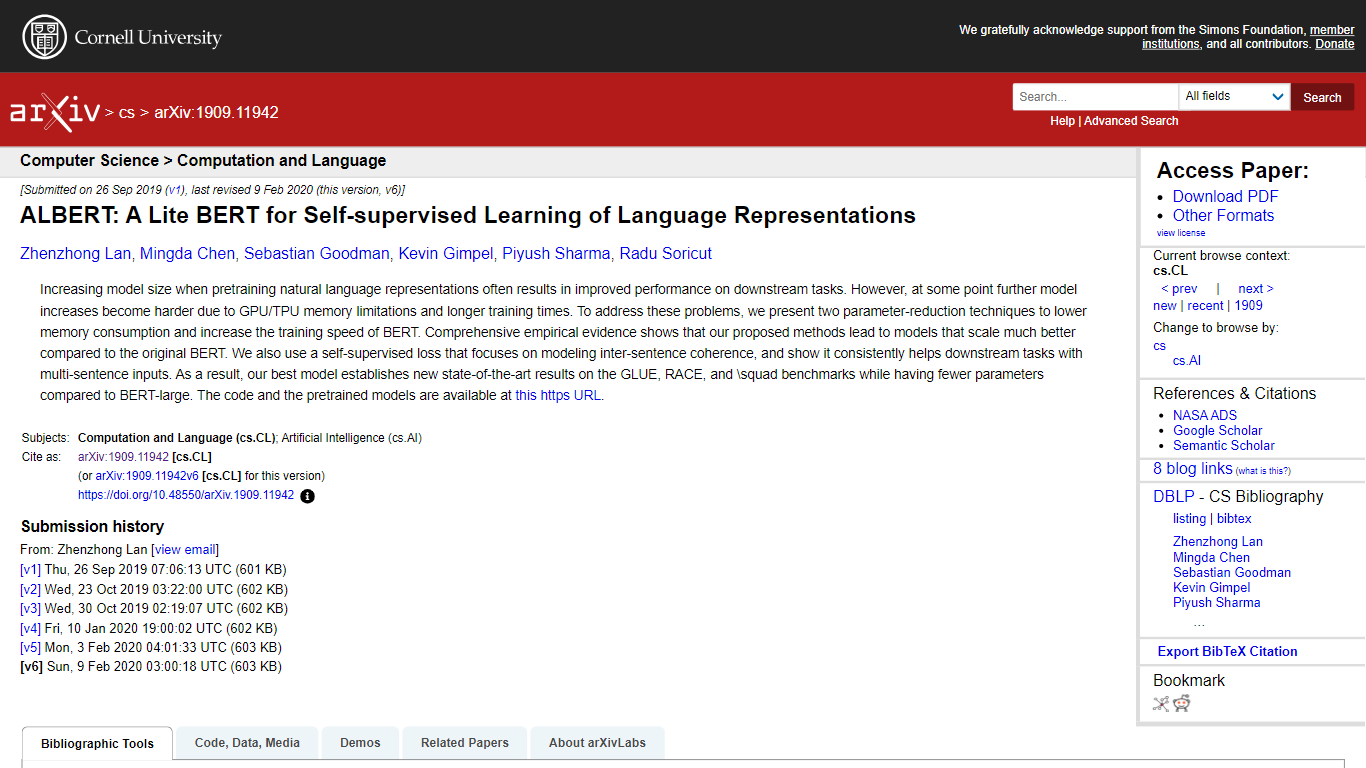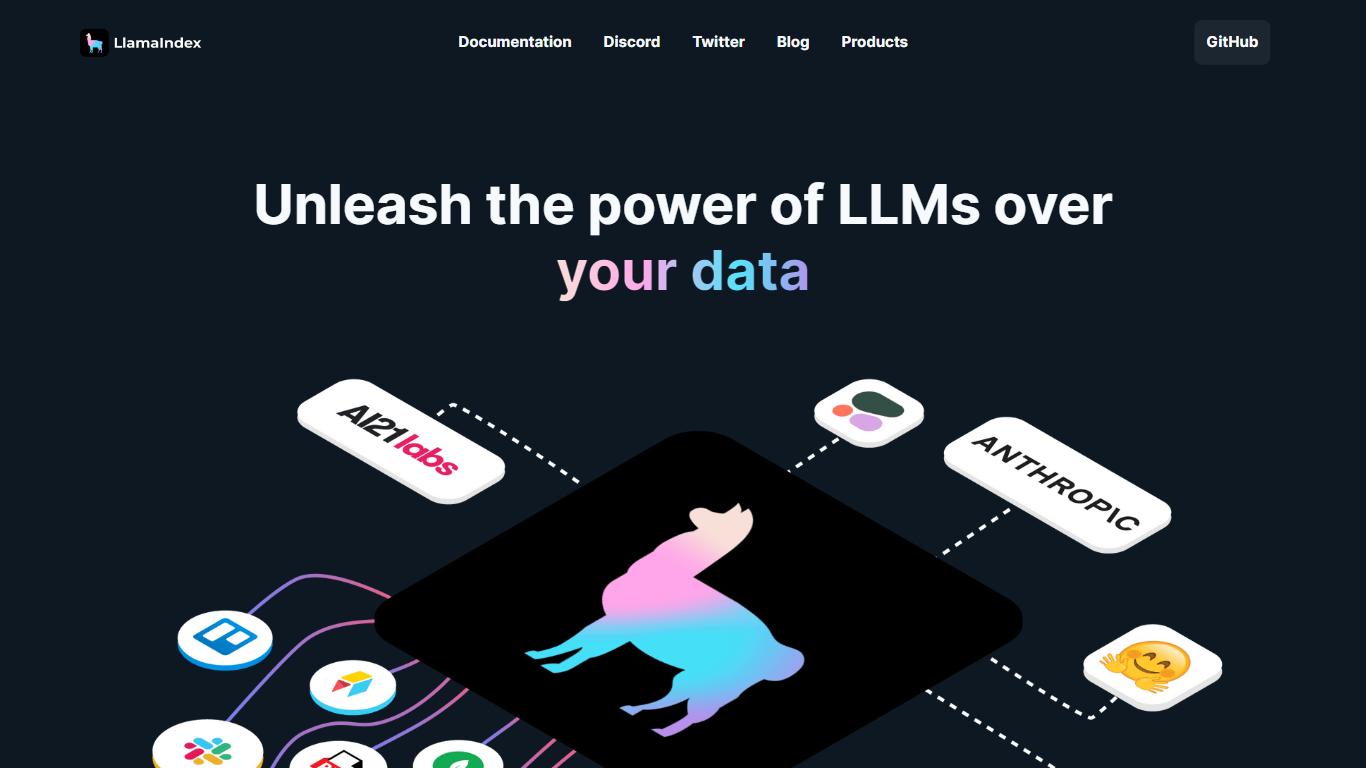ALBERT vs LlamaIndex
In the contest of ALBERT vs LlamaIndex, which AI Large Language Model (LLM) tool is the champion? We evaluate pricing, alternatives, upvotes, features, reviews, and more.
If you had to choose between ALBERT and LlamaIndex, which one would you go for?
When we examine ALBERT and LlamaIndex, both of which are AI-enabled large language model (llm) tools, what unique characteristics do we discover? Neither tool takes the lead, as they both have the same upvote count. Every vote counts! Cast yours and contribute to the decision of the winner.
Not your cup of tea? Upvote your preferred tool and stir things up!
ALBERT

What is ALBERT?
ALBERT, short for "A Lite BERT," is an optimized version of the widely-used BERT model for natural language processing tasks. Presented in the arXiv paper by Zhenzhong Lan and colleagues, ALBERT offers two parameter-reduction techniques that significantly decrease memory consumption and increase the training speed of BERT without sacrificing performance.
This advancement addresses the challenge of GPU/TPU memory limitations and the typically lengthy training times associated with increasing model sizes. The paper demonstrates through empirical evidence that ALBERT not only performs better than BERT on a variety of benchmarks, like GLUE, RACE, and SQuAD, but it also achieves state-of-the-art results with a smaller parameter count. The research further introduces a self-supervised loss function that enhances the model’s ability to understand inter-sentence coherence, leading to a substantial improvement on tasks requiring multi-sentence inputs. The authors provide the code and pretrained models for ALBERT, making them accessible for widespread use in the NLP community.
LlamaIndex

What is LlamaIndex?
LlamaIndex presents a seamless and powerful data framework designed for the integration and utilization of custom data sources within large language models (LLMs). This innovative framework makes it incredibly convenient to connect various forms of data, including APIs, PDFs, documents, and SQL databases, ensuring they are readily accessible for LLM applications. Whether you're a developer looking to get started easily on GitHub or an enterprise searching for a managed service, LlamaIndex's flexibility caters to your needs. Highlighting essential features like data ingestion, indexing, and a versatile query interface, LlamaIndex empowers you to create robust end-user applications, from document Q&A systems to chatbots, knowledge agents, and analytics tools. If your goal is to bring the dynamic capabilities of LLMs to your data, LlamaIndex is the tool that bridges the gap with efficiency and ease.
ALBERT Upvotes
LlamaIndex Upvotes
ALBERT Top Features
Parameter-Reduction Techniques: Techniques that lower memory consumption and boost BERT's training speed.
Improved Model Scaling: ALBERT scales better than the original BERT, even with fewer parameters.
State-of-the-Art Performance: Achievements include new high scores on GLUE, RACE, and SQuAD benchmarks.
Self-Supervised Loss Function: A novel loss function that improves modeling of inter-sentence coherence.
Open Source Models: The pretrained models and codebase are publicly available for community use.
LlamaIndex Top Features
Data Ingestion: Enable integration with various data formats for use with LLM applications.
Data Indexing: Store and index data for assorted use cases including integration with vector stores and database providers.
Query Interface: Offer a query interface for input prompts over data delivering knowledge-augmented responses.
End-User Application Development: Tools to build powerful applications such as chatbots knowledge agents and structured analytics.
Flexible Data Integration: Support for unstructured structured and semi-structured data sources.
ALBERT Category
- Large Language Model (LLM)
LlamaIndex Category
- Large Language Model (LLM)
ALBERT Pricing Type
- Freemium
LlamaIndex Pricing Type
- Freemium
